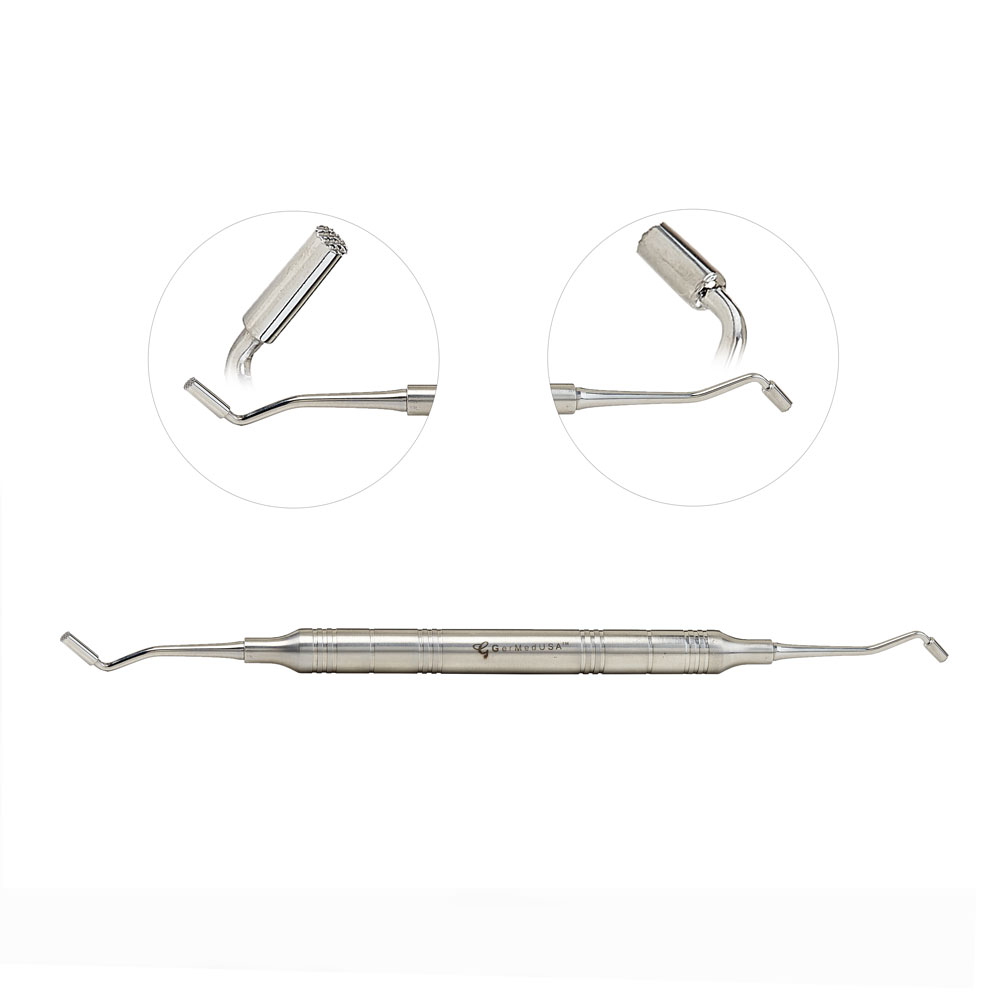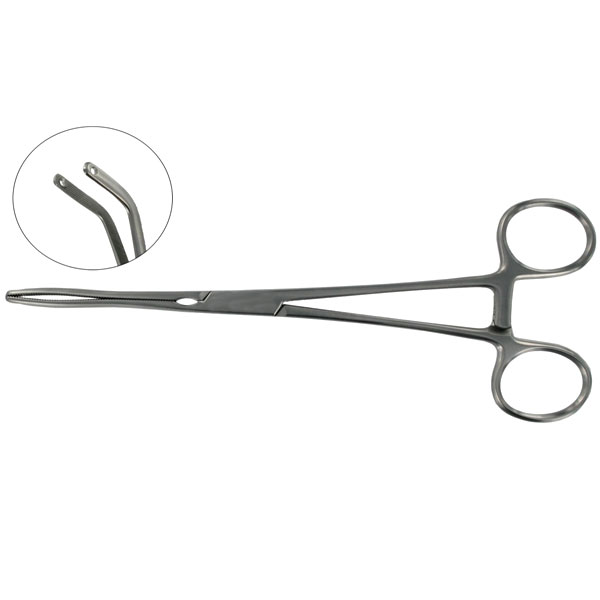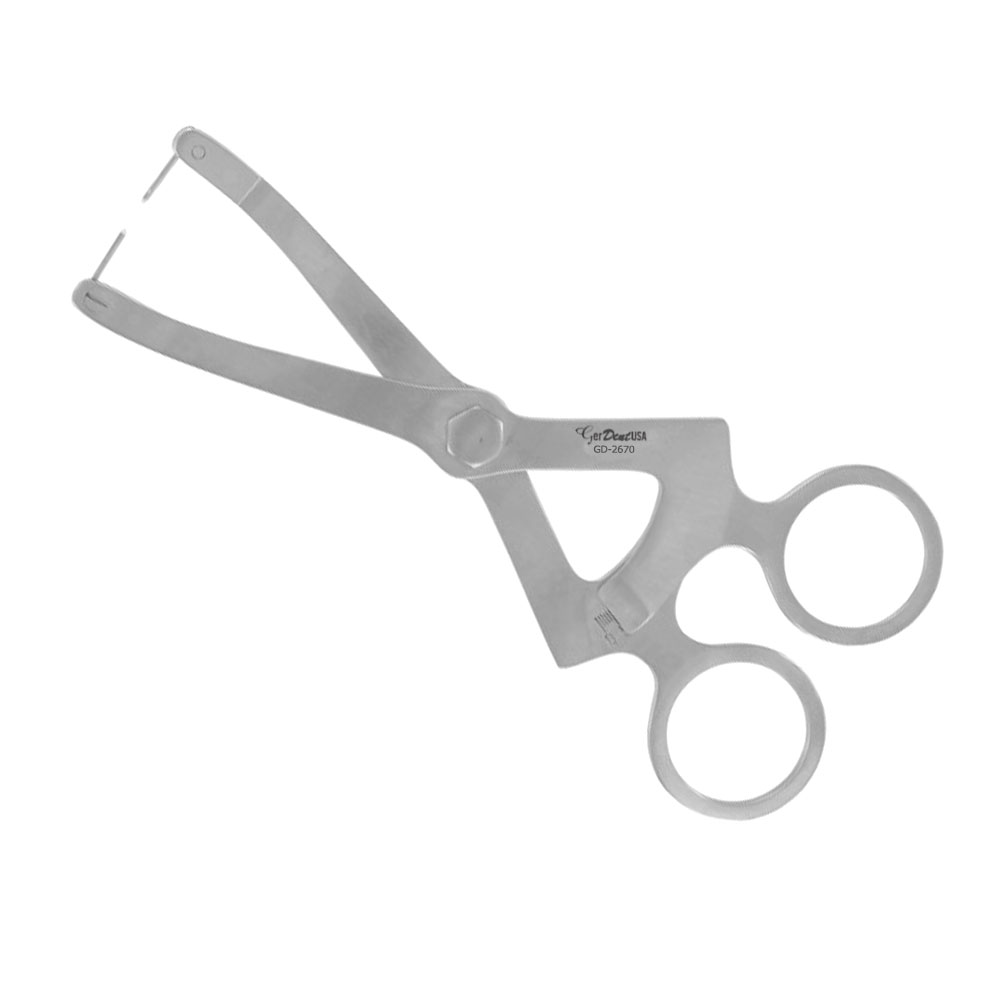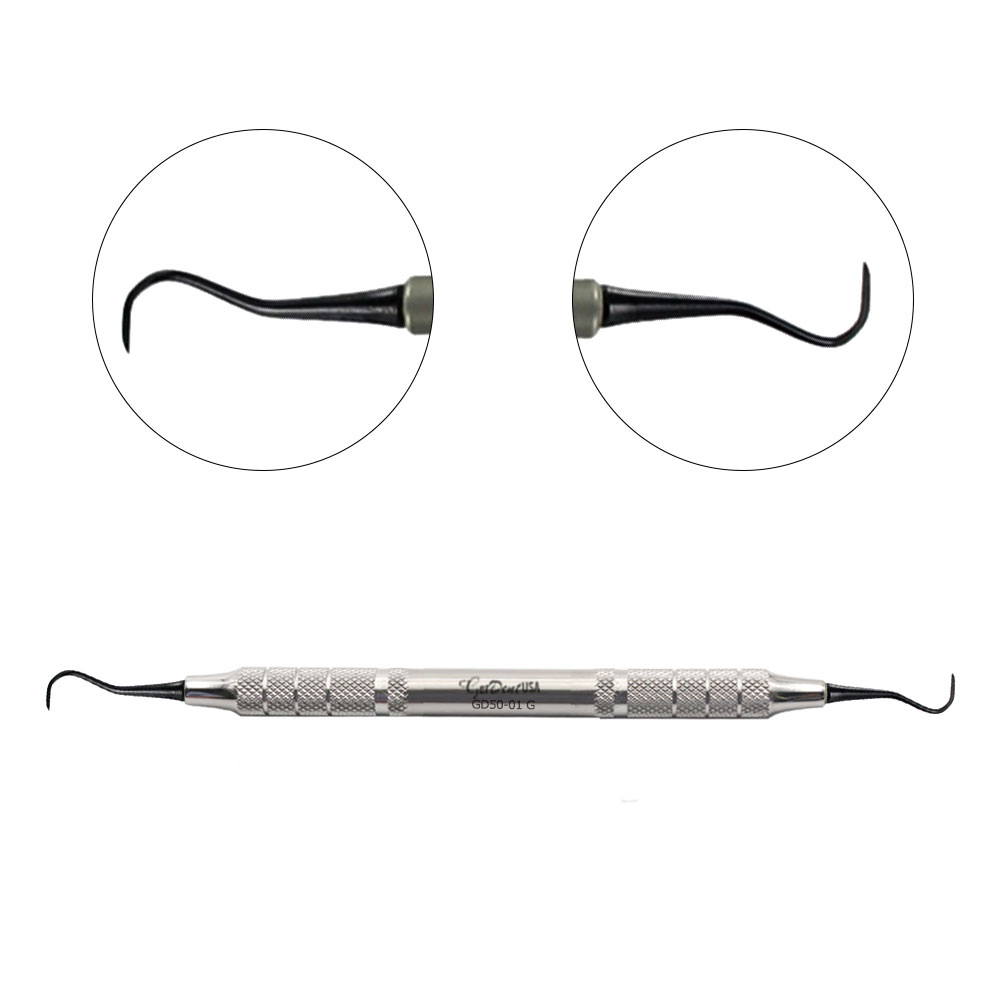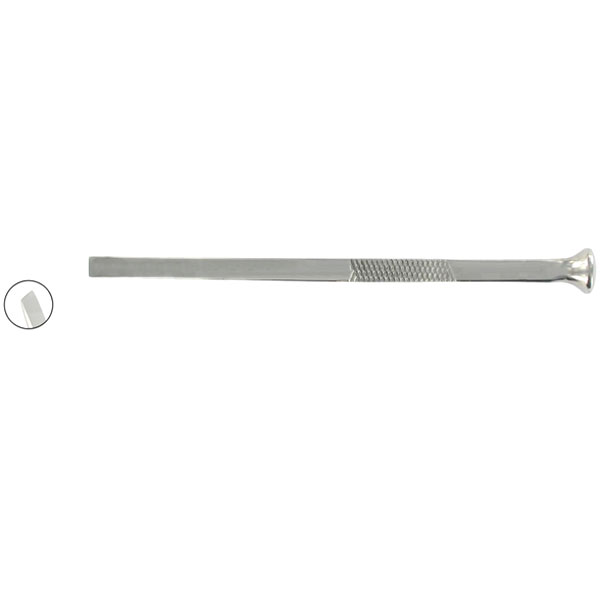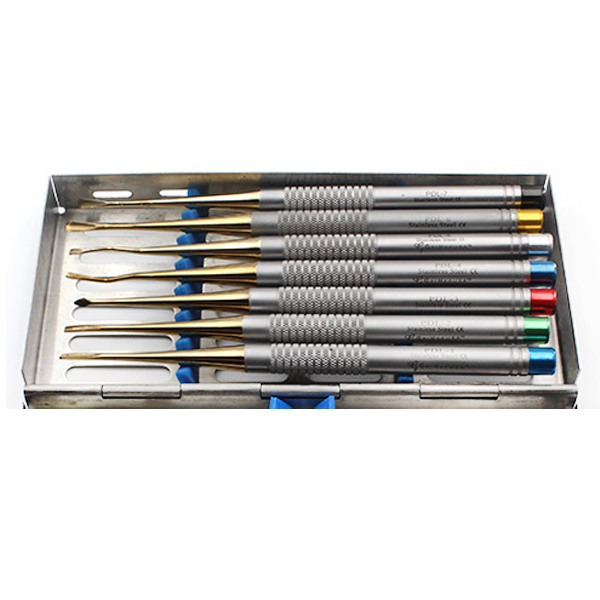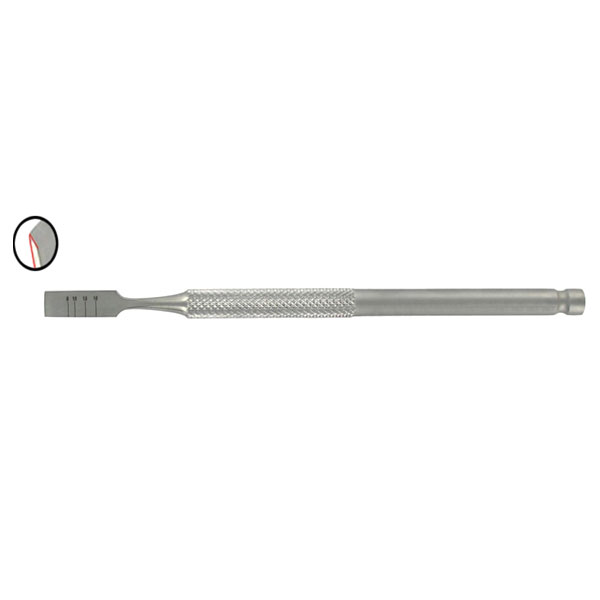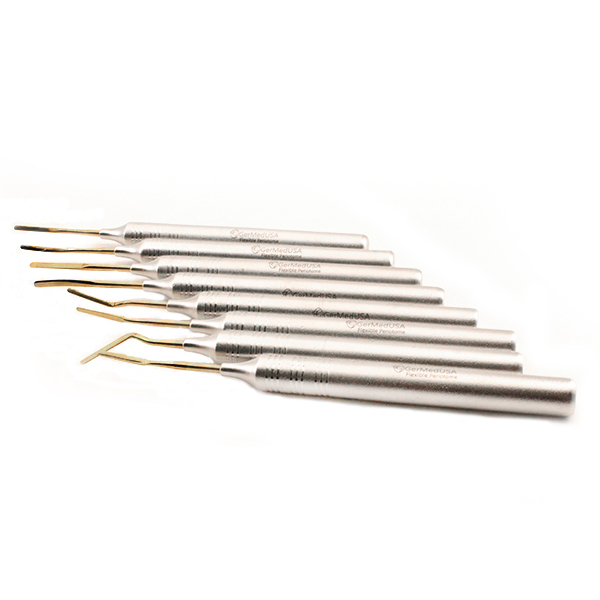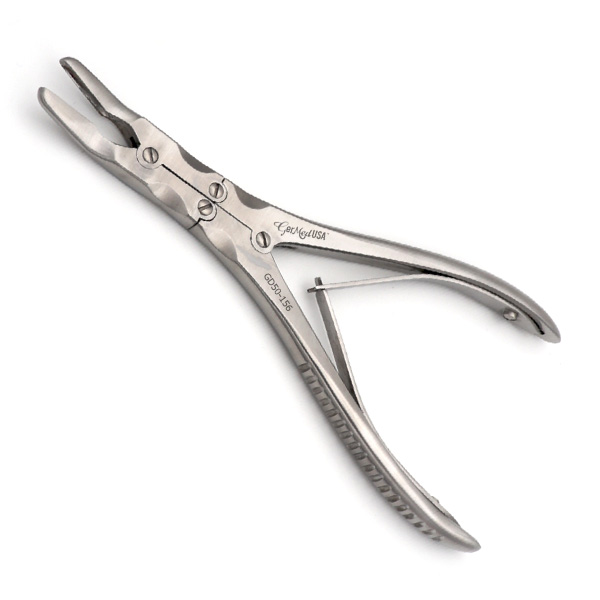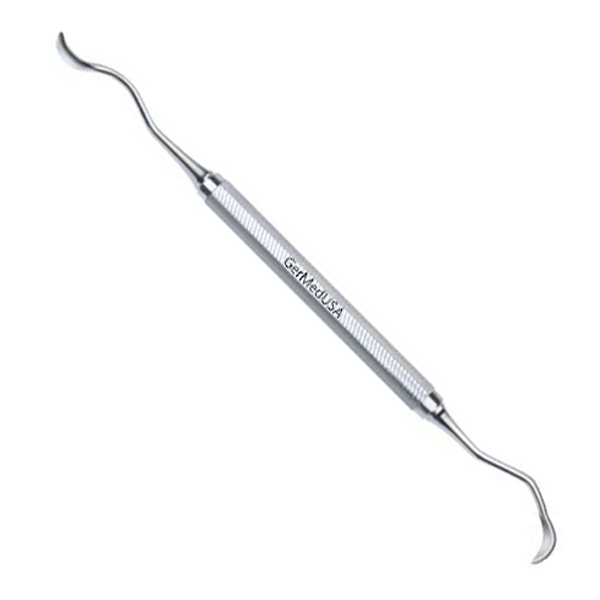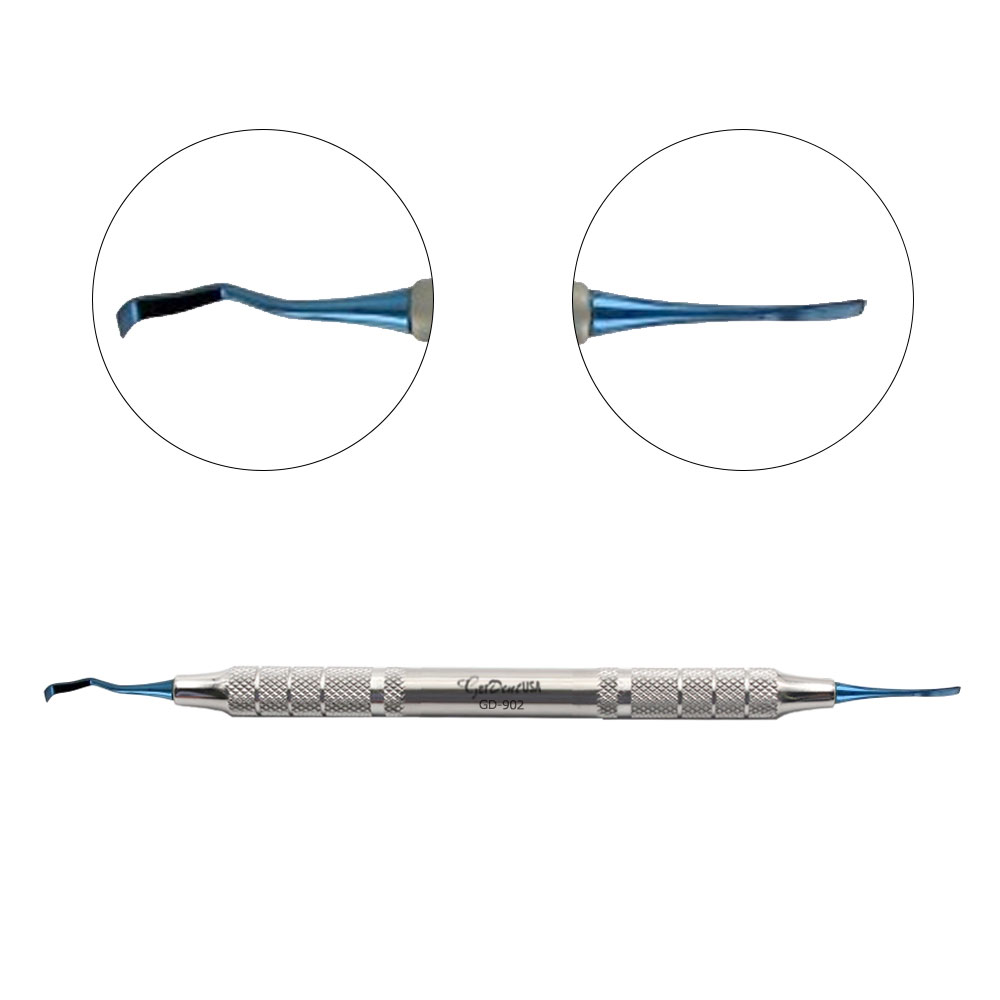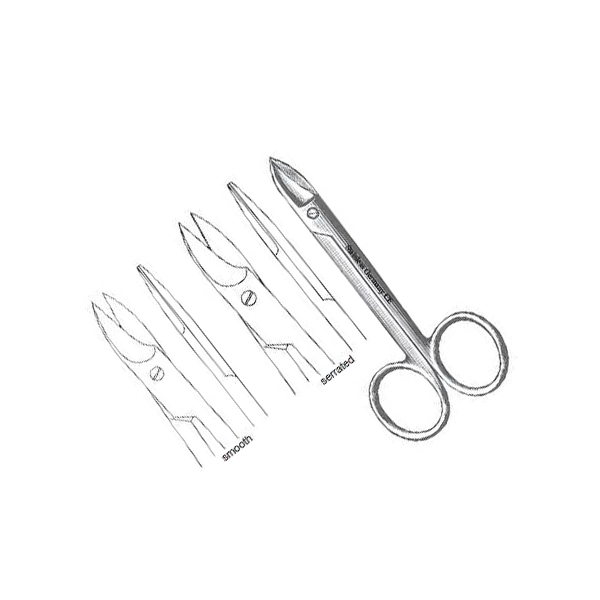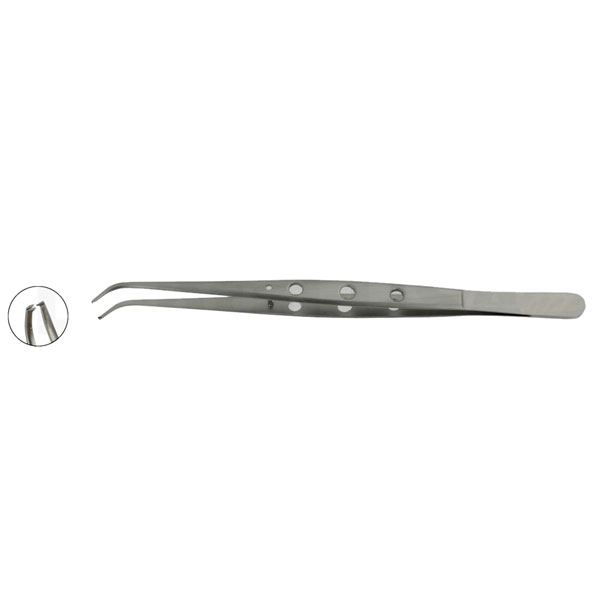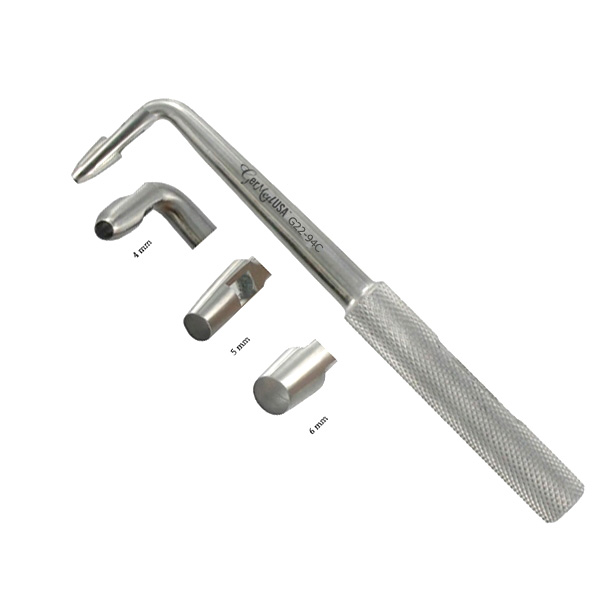Replacing missing teeth requires the use of dental implants. Dental implants are permanent solutions for the replacement of missing teeth. A dental implant is a screw-like fixture that is allowed to fuse with the jaw bone. A custom-made crown is then placed on the implant. The dental implant acts as a tooth root for replacing teeth. The artificial tooth root then holds a bridge or a replacement tooth in place. In comparison to other prosthetic replacements, the dental implant is the safest. It is also the most effective treatment for the replacement of teeth, as the implant stands on its own without affecting any nearby teeth. Dental Implants are made of titanium, which allows them to fuse with the jaw bone over time without being recognized as foreign objects in the body. Dental implants are known to preserve bone and stimulate bone growth. All other replacements cause bone loss in long term.
Dental Implant Tools:
Many tools/ kits have to be used by the dentist to ensure a successful implant procedure. Many of the tools are basic armamentariums for regular procedures in the clinic, eg mouth mirrors, and tissue forceps, etc. Other than that, there are many specialized tools that come into use for successful implant placement at the clinic. Some of them are discussed below
1) Bone Graft Pluggers
If the bone is too thick, oral surgeons use bone grafts to thicken the bone. This is because the implant derives its support from the bone. Hence the jaw bone needs to have a certain thickness to hold implants in place. Bone graft pluggers are instruments that pack the bone graft in place. These are handheld instruments, composed of a handle, shank, and working end. The shanks are angled to provide better access and working of the instrument. There is a variety of shapes available for the working ends of the pluggers. Some are serrated for better condensation of the graft.
2) Bone Graft Forceps
Bone grafting requires the use of many instruments, one of which is bone grafting forceps. These forceps are for holding and transferring the graft on site. They aid in placing the graft on site.
3) Calipers and Retractors
Many types of calipers and retractors come into use during implant placement. Calipers are for measuring the distance between teeth. Different designs of calipers are available for use. They include Castroviejo calipers, Boley gauge calipers, and bone calipers.
Retractors are instruments that retract the soft tissues during implant placement. Cheek, lips, and tongue may obstruct the implant placement site and retractors come in use to hold away these soft tissue structures. Minnesota retractor is a thick, tongue-like instrument that retracts away from the tissues. Other than that, the bayonet retractor is another retractor that comes in use to hold away cheeks and tongue.
4) Curettes/ Scalers
Curettes and scalers are instruments that come in use for removing calculus from the surface of the teeth. Gingival health is crucial for successful implant placement. The necrotic soft tissue and calculus hence need to be removed from surfaces of other teeth to reduce the bacterial load and promote good gingival health. Curettes are instruments that have a handle, shank, and blade/ working end that allows the instrument to scrape off calculus from surfaces of teeth. Curettes have other variations that are area-specific and are used in specific areas of the mouth. Scalers also aid in removing Calculus from the surfaces of teeth.
5) Implant Osteotomes
Implant osteotomes are instruments that come in use for deforming, cutting, or compressing the bone. These are wedge-shaped instruments. They are used by lubricating the instrument into saline or sterile water. The instrument has to be malleted or tapped in the bone for compressing it. Bone manipulation through osteotomes creates a way/ space for osteogenesis. It also compacts the bone for the stability of the implant.
6) Luxating Elevators
Luxating elevators are handheld instruments that come in use for the removal of teeth. They luxate the tooth out from its socket. They sever the periodontal ligament and luxate the tooth so it is easier for the operator to apply extraction forceps and pull the tooth out. Luxating elevators come with a variety of designs for handles and blades. Stubby handles are available for firm gripping of the instrument.
7) Micro Needle Holders
Needle holders come in use for holding the suturing needle and carrying it through tissues for suture placement. Microneedle holders have a spring handle that makes them easy to use. The micro tips of the instrument are to hold a small suturing needle in place and to drive it through tissues for effective suture placement.
8) Ridge Spreader
Ridge spreaders are instruments that allow the spreading of bone for implant placement. These make space for implant placement in the mouth, without the use of a chisel and without drilling the bone. These are handheld instruments that come in use for spreading the bone. The instrument is composed of a handle, shank, and working end. The outer body of the instrument is serrated for firm gripping of the instrument.
9) Periotomes
Periotomes are handheld instruments with a very narrow, thin blade that allows the instrument to sever the periodontal ligament fibers for Atraumatic, clean extraction procedures. Periotomes also has a handle, shank, and blade. This instrument severs the periodontal ligament fibers around the tooth to cleanly extract the teeth out of their sockets.
10) Rongeur
Bone Rongeurs are heavy, plier-like instruments that come in use for trimming and contouring the bone after extractions. They come in use for removing bony spicules and extra bone that may obscure suturing and delay healing after extractions.
11) Sinus Lift Instruments
These sinus lift are handheld instruments that come in use for lifting the sinus membrane. They have a handle, shank, and a working end. Different designs of working ends are available to suit the operator's needs, some have sharp working ends while others have smooth working ends.
12) Surgical Chisels
Chisels are for contouring, removing, and smoothing out the bone for implant placements. They are the most common tools used during the implant placement procedure. The instrument has a square-shaped working end to allow for its purpose.
13) Surgical Scissors
Surgical scissors are for cutting the suture material and other delicate tissues. The Castro Viejo scissors have a spring handle that aids in the ease of use of the instrument.
14) Tissue Pliers
Tissue pliers are instruments that come in use for grasping soft tissue structures for suturing. These are long instruments with beaks to stabilize and support soft tissues for suture placement. They also come into use for the placement of dressing material on wounded sites.
15) Tissue Punches
These instruments are for gaining access to the underlying bone. Tissue punches come in use when there is good width of bone and no extra bone is needed. This instrument has a long hollow working end with a contra angled shank. They are useful for preserving the tissues beside the implant.


